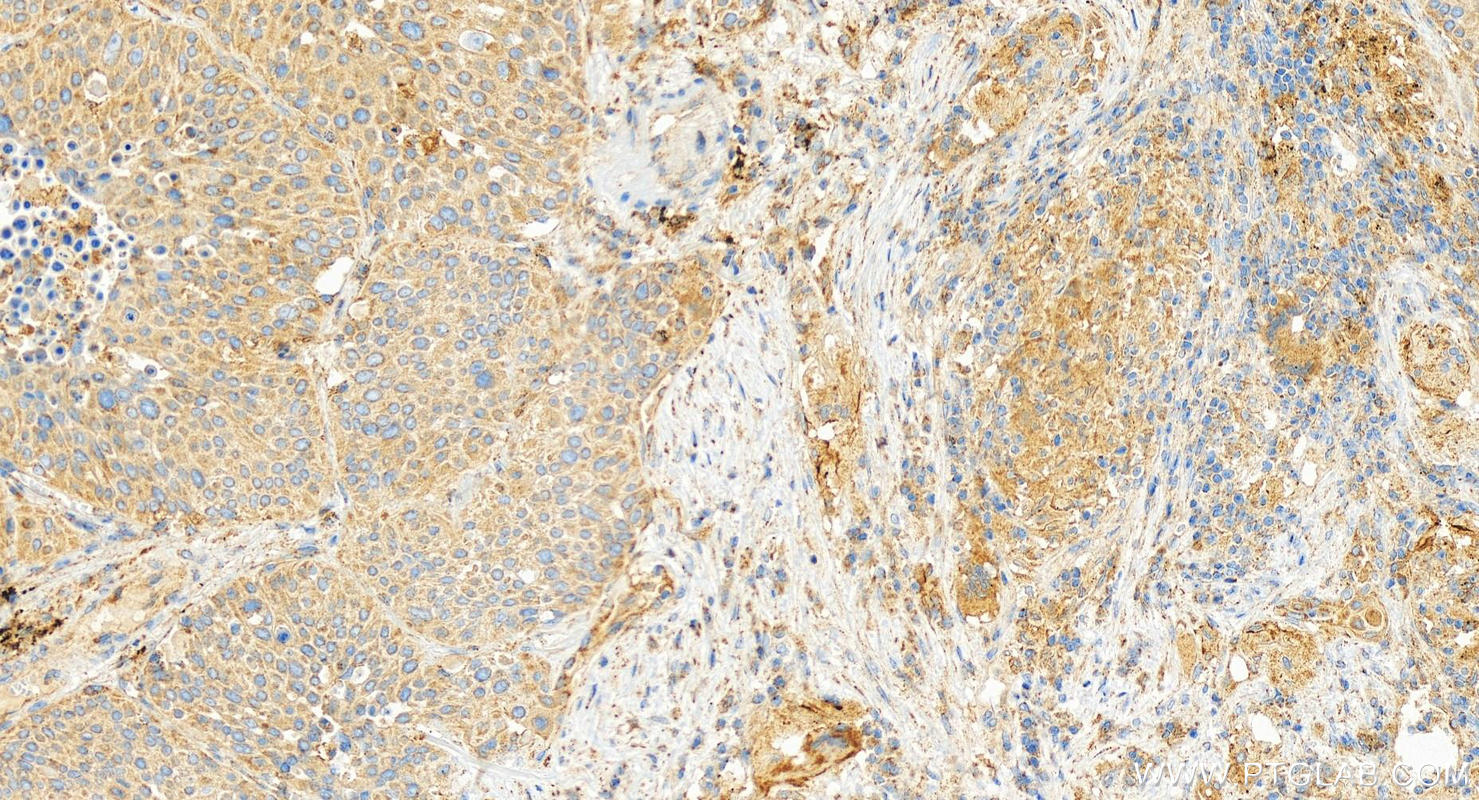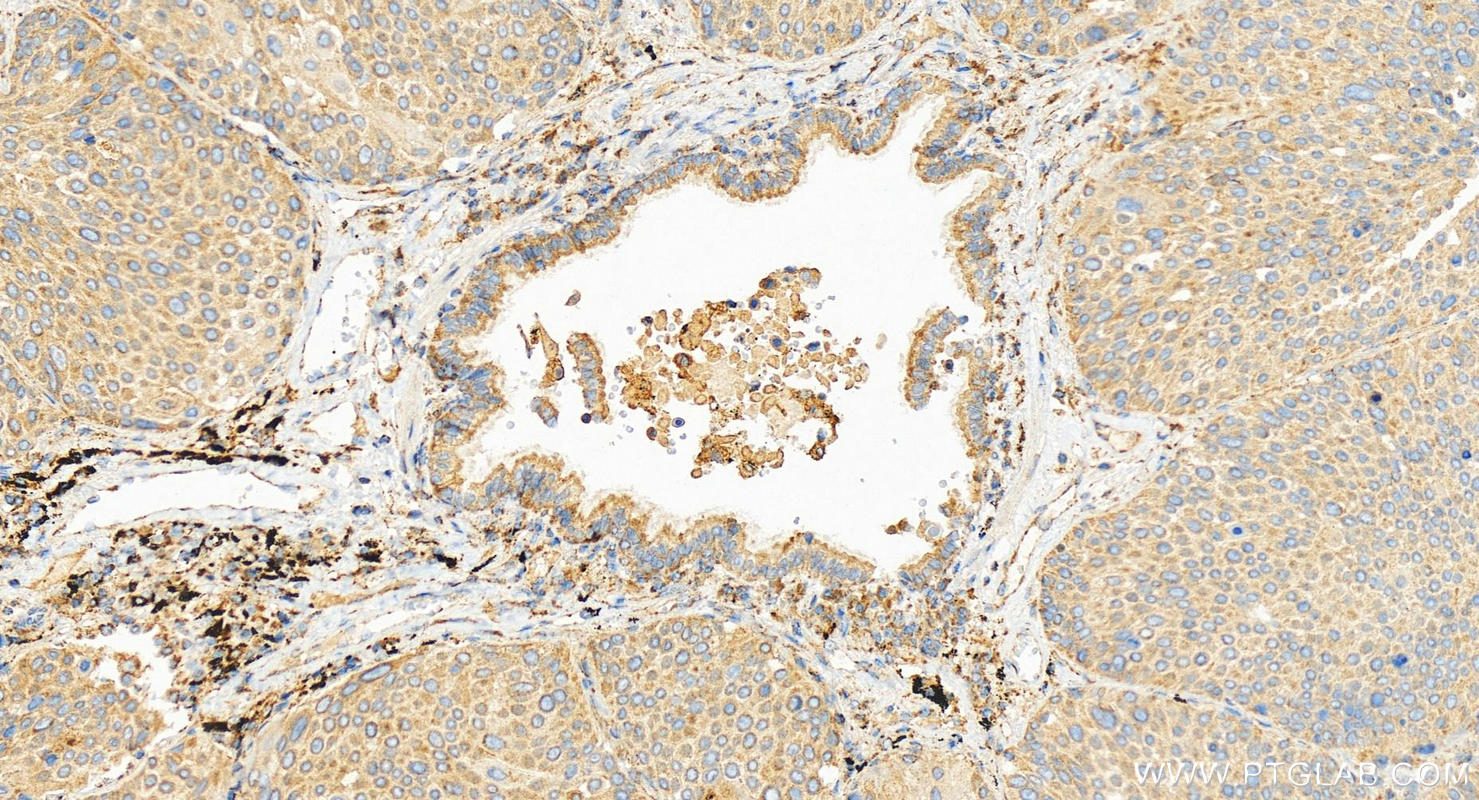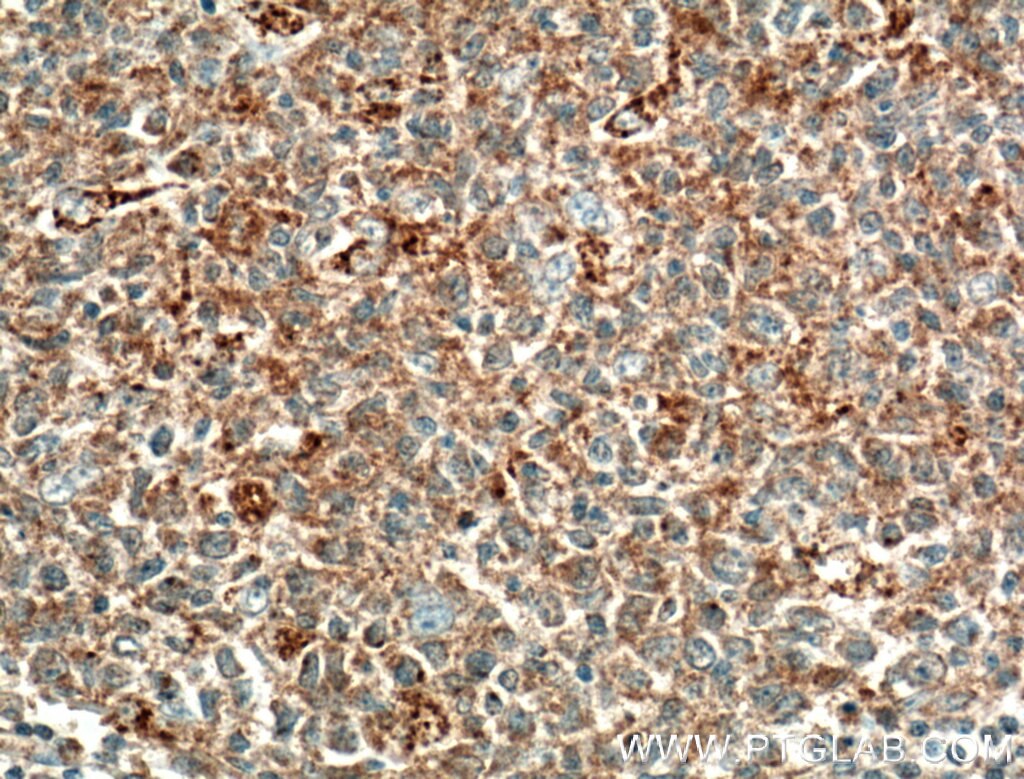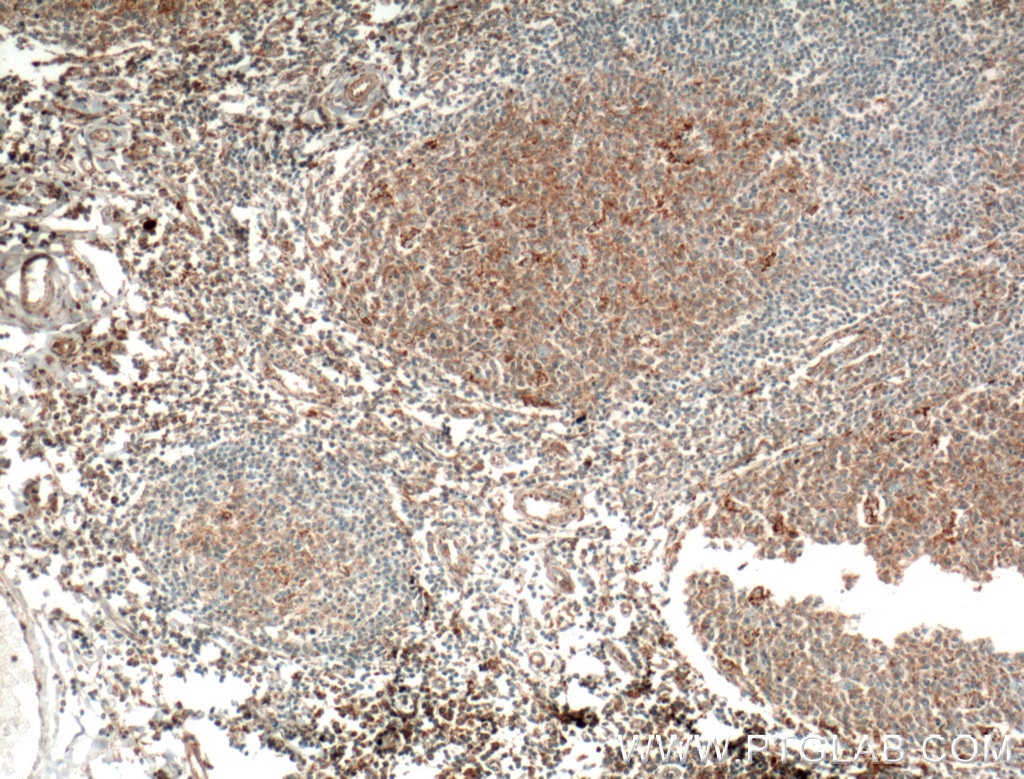Tested Applications
| Positive IHC detected in | human lung squamous cell carcinoma tissue, human tonsillitis tissue Note: suggested antigen retrieval with TE buffer pH 9.0; (*) Alternatively, antigen retrieval may be performed with citrate buffer pH 6.0 |
Recommended dilution
| Application | Dilution |
|---|---|
| Immunohistochemistry (IHC) | IHC : 1:800-1:3200 |
| It is recommended that this reagent should be titrated in each testing system to obtain optimal results. | |
| Sample-dependent, Check data in validation data gallery. | |
Published Applications
| IHC | See 2 publications below |
Product Information
11786-1-AP targets CCL11/Eotaxin in IHC, ELISA applications and shows reactivity with human samples.
| Tested Reactivity | human |
| Cited Reactivity | mouse, rat |
| Host / Isotype | Rabbit / IgG |
| Class | Polyclonal |
| Type | Antibody |
| Immunogen |
CatNo: Ag2398 Product name: Recombinant human Eotaxin protein Source: e coli.-derived, PGEX-4T Tag: GST Domain: 1-97 aa of BC017850 Sequence: MKVSAALLWLLLIAAAFSPQGLAGPASVPTTCCFNLANRKIPLQRLESYRRITSGKCPQKAVIFKTKLAKDICADPKKKWVQDSMKYLDQKSPTPKP Predict reactive species |
| Full Name | chemokine (C-C motif) ligand 11 |
| Calculated Molecular Weight | 97 aa, 11 kDa |
| GenBank Accession Number | BC017850 |
| Gene Symbol | CCL11/Eotaxin |
| Gene ID (NCBI) | 6356 |
| RRID | AB_10860099 |
| Conjugate | Unconjugated |
| Form | Liquid |
| Purification Method | Antigen affinity purification |
| UNIPROT ID | P51671 |
| Storage Buffer | PBS with 0.02% sodium azide and 50% glycerol, pH 7.3. |
| Storage Conditions | Store at -20°C. Stable for one year after shipment. Aliquoting is unnecessary for -20oC storage. 20ul sizes contain 0.1% BSA. |
Background Information
CCL11 also named Eotaxin-1, was initially discovered as an eosinophil-specific chemoattractant. CCL11 plays a central role in both allergic and non-allergic inflammatory reactions by recruiting immune cells such as eosinophils,basophils and Th2 lymphocytes. CCL11 binds to the chemokine receptors CCR2, CCR3 and CCR5, with highest affinity to CCR3. High levels of CCL11 have been described in several chronic inflammatory diseases, such as allergic rhinitis, atopic dermatitis, asthma, gastrointestinal disease and rheumatoid arthritis.
Protocols
| Product Specific Protocols | |
|---|---|
| IHC protocol for CCL11/Eotaxin antibody 11786-1-AP | Download protocol |
| Standard Protocols | |
|---|---|
| Click here to view our Standard Protocols |
Publications
| Species | Application | Title |
|---|---|---|
Am J Physiol Heart Circ Physiol Pygo1 regulates pathological cardiac hypertrophy via a β-catenin-dependent mechanism. | ||
Am J Rhinol Allergy Effects of Ursolic Acid on the Expression of Th1-Th2-related Cytokines in a Rat Model of Allergic Rhinitis After PM2.5 Exposure. |










